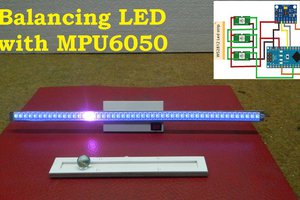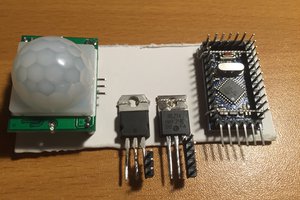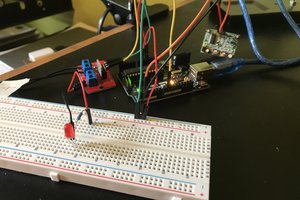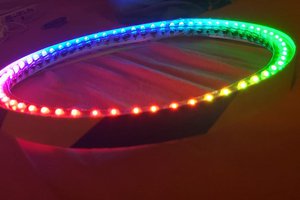The pressure sensor is used to calculate the altitude. This is quite sensitive, so I also created a base station to transmit the reference pressure at ground level. The jacket calculates my current height above the base station and adjusts the color of the jacket accordingly.
The pressure sensor data did need some filtering to get it stable, I used a kalman filter for this.
Potentiometers
- dimming, the jacket is quite bright!
- color at ground level (where does the colorwheel start)
Switches
- full-scale distance (14 meters for normal climbing (the gym is 15 meters high) or 4 meters for bouldering mode)
- conversation mode (constantly changing color)
I used velcro to attach the arduino to the jacket so I can easily replace the arduino by another one with different code/animations.
The leds are 'mounted' onto the jacket by first soldering wires to the leds (6 wires per led) and then using a pointy tool to force a large enough hole between the fibres of the fabric and pushing through the wires. when you do this in the correct spacing, the leds and wires will act as a sort of outward folded staple.
Because I (accidentally) used stretch fabric, I laid out the wires in a meandering pattern, and tied the wires to the fabric using sewing thread. this turned out to work very well!
The leds are currently connected as two parallel, mirrored chains, and though I did not implement any patterns yet, it's on the todo list :)
Estimated:
According to the led specifications (hard to find, partially estimated) the leds would use 20 mA per color per led, so white light would be 60 mA per led.
becuase I use 32 leds, the total current consumption would be 1920 mA, divided over two battery packs.
Measured:
Today I also measured the current consumption:
Arduino: 35 mA
Longest chain (17 leds): 260 - 35 (arduino) = 225 mA
shortest chain (15 leds): 200 mA
In both cases this equals about 13 mA per color, per led.
Batterylife would therefore be about 10 hours (using 2000 mAh batteries).

 mircemk
mircemk
 brigadir
brigadir

WS2812 also work quite good on LiIon (e.g.18650) cells, although the voltage is a little out of spec. That would be an easy opportunity to safe some weight, depending on the planned duration of use, a single 18650 cell could be enough.
Of course you want a 3V3 processor in this case, something like a Teensy 3.x or one of the STM32F103 mini boards could be an option.